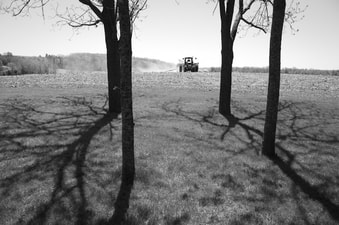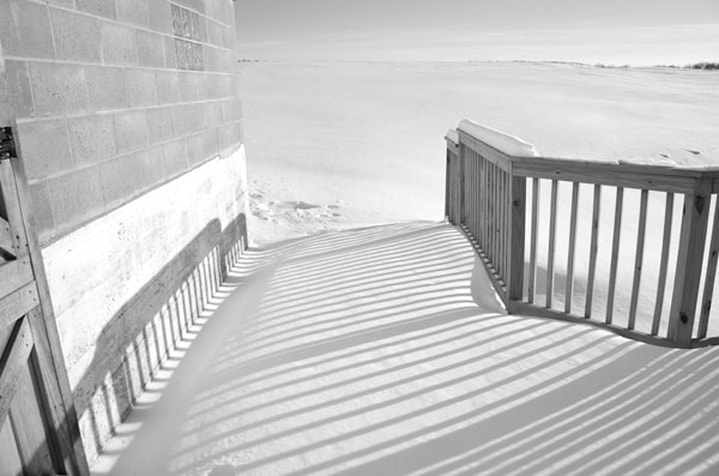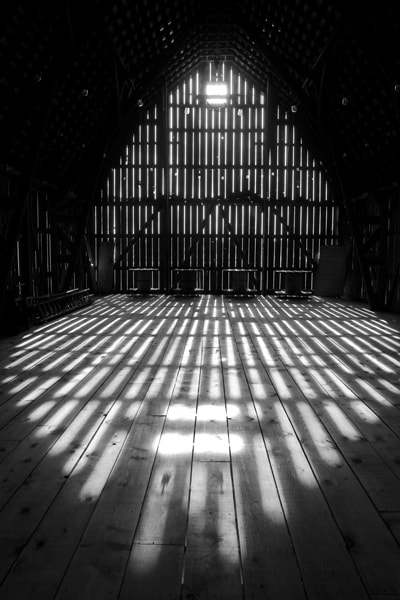|
On one bone-numbing morning last winter, my steely will was weakened for a moment as I wished our farm were in a warmer climate – Florida warm, equator warm – at least for a day or two. Four billion years ago I would have had my wish because Ashton and the rest of Wisconsin were still a thousand miles south of the equator.  Spring field work on the farm. Spring field work on the farm. It took a couple billion years, but Ashton eventually made its way north to here, the land of four seasons, including winter, by riding atop shifting tectonic plates through a process called continental drift. Along the way Ashton had experienced the tropics, volcanoes, mountains, wind erosion, massive floods, and finally glaciers that erased most signs of the earlier landscapes. Some 12,000 years ago our farm, The Old Brabender Place, was covered with hundreds of feet of glacial ice, which when it melted, covered the place with soil and rocks from as far away as Canada, where the last glacier had begun. I should have been cursing Canada, not the rocks, when I spent my early years clearing plowed fields each spring. Today I don’t worry about the rocks in our fields. My dad hired a bulldozer operator to bury the largest ones a few decades ago. The farmers who rent our farm fields now no longer need to plow to plant their crops of soybeans and corn, so fewer stones emerge from the soil. The passing of stones is just one of many stories that Father Farm reveals in this chapter of “Whole Hearted - A Farm Love Story” about the 120 acres that Christian and Cecelia Brabender purchased in Ashton after they married in July 1858 . . . and the place I call home. Here, you’ll read tales about the Native Americans, the Ho-Chunk, who cared for this land for probably a thousand years before Yankee, then German, settlers arrived. I’ll introduce you to the settlers who once held title to our property before Christian and Cecelia. Our farm picture wouldn’t be complete without a survey of the plants, animals, and soils that have called this place home – it takes a biological village to make a farm. Father Farm beckons you back when I post the rest of these stories. Bibliographic note: I took some poetic license when I described Ashton’s changing geology. It’s tough to cram billions of years of history into a couple of paragraphs. For a more detailed and accurate account, check out "Roadside Geology of Wisconsin" by Robert H. Dott Jr., and John W. Attig, Mountain Press Publishing Co., 2004. I am indebted to these authors for any parts of our geologic history I did get right. Author’s note: I upload posts as I complete them, so one written about a recent event may precede posts about earlier events. The introduction to each post shows where it fits into the history. For an introduction to my memoir, visit Whole Hearted - A Farm Love Story.
0 Comments
Leave a Reply. |
IntroductionThis blog is a book in the making. If you're a new visitor, read Whole Hearted - A Farm Love Story. You can also find a copy in Prologue.
ChaptersPrologue
Father Land Mother Land Father Farm Mother House Brother Barn Sister Silo Granny Granary Epilogue All Archives |


 RSS Feed
RSS Feed